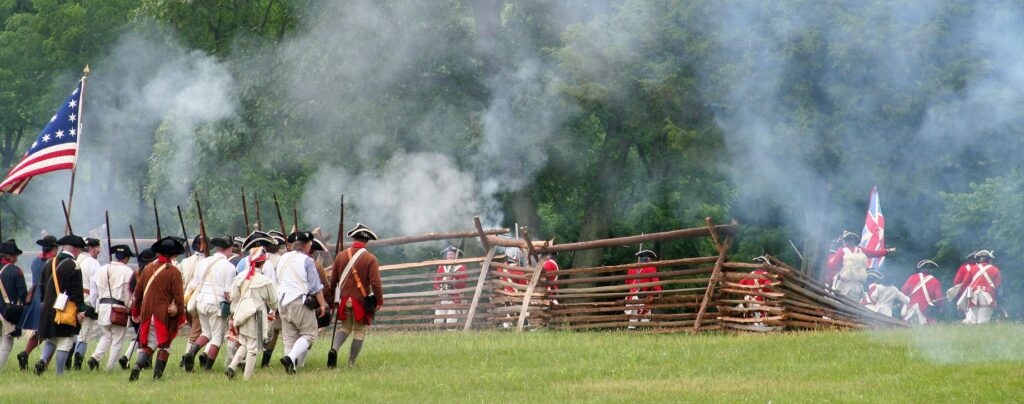
The American Revolution is a delight to study. A few tidbits from Edward Lengel and the contributing authors in The 10 Key Campaigns of the American Revolution are relevant to this blog. Some fun stuff:
- Perseverance in face of ongoing reversals.
- Paying Continental soldiers in specie, that means silver.
Next post will discuss What is a “militia?”
Perseverance in face of ongoing reversals.
Author points out George Washington had more losses in battle than wins. In spite of that he led the patriot forces to victory over the greatest world power of the time.
An overarching feature that shows throughout the book is perseverance in face of trials, tribulations, and battlefield defeats.
By December 25, 1776 things were going so poorly that the patriots thought the war for independence was already lost. Ten days later, after Washington’s crossing the Delaware and tremendous victory over the British at Trenton, hope revived.
The army almost fell apart at Valley Forge, but perseverance saw them through and General von Steuben provided the training that eventually let to Yorktown and victory.
Seems like the battles in the Carolinas were more often losses than wins, with a few spectacular exceptions.
In terms of perseverance, it is worth noting Major-General Nathanael Greene constantly struggled with “logistical difficulties, financial challenges, and three major battles.” His summary of the patriot forces in the south is reported to have been:
“We fight, get beat, rise, and fight again.”
It was only because of such perseverance in the face of severe challenges and reversals that the patriot forces gained our freedom.
What did all the patriot forces do?
Fight, lose, rally.
Fight, lose, rally.
Fight, lose, rally.
Fight, win.
We can all learn from their example.
Paying Continental soldiers in specie, i.e. silver
Over the winter of 1780-1781 discontent in the army about not having been paid grew worse, reportedly resulting in either a near mutiny or open mutiny in January 1781. While marching troops from New York to contain Cornwallis at Yorktown, Washington borrowed about 20 million livres from the French to provide one months paid to the continental soldiers. Author says this is the only time troops were paid with silver.
Let’s ponder that amount of pay.
Wikipedia reports in the article French livre, currency was set at 8 ounces of silver equal to 51 lv, 2s, 3d. Let’s call that 51 livres to 8 ounces of silver. Doing a bit of math shows there are 6.38 livres to an ounce. That means one livre is 0.157 Troy ounces of silver.
For comparison, a pre-1965 U.S. quarter contains about 0.181 ounces of silver. Look at a modern quarter for a rough comparison to a French livre coin of the time. (Well, except there were no 1 lv coins minted, so picture a U.S. half dollar for a rough approximation of a 2 livre coin.)
The 20 million livres borrowed by Washington would be 3,137,255 ounces of silver. At 12 ounces to the troy pound that would be 261,438 Troy pounds.
This was an incredibly gracious loan by the French. Gen Rochambeau had a huge amount of silver with him as indicated by him being able to pay his troops and purchase all his applies in specie.
Author points out that this almost doubled the amount of specie, hard assets of silver and gold, in circulation across entire United States. That would have been a phenomenal boost to the entire economy at the moment and in the years to follow.